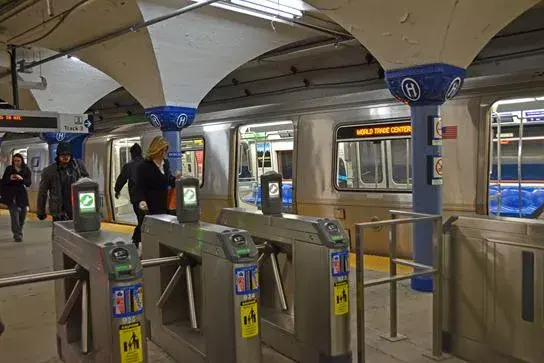 Security across surface transportation systems is extremely challenging. The Science and Technology Directorate (S&T) is working with the Transportation Security Administration and surface transportation authorities across the country to develop screening technologies which will enhance security in a wide variety of open, unstructured crowd venues. The Surface Transportation Explosives Threat Detection Program is designed to provide anomaly/explosives detection in a high throughput environment.
Security across surface transportation systems is extremely challenging. The Science and Technology Directorate (S&T) is working with the Transportation Security Administration and surface transportation authorities across the country to develop screening technologies which will enhance security in a wide variety of open, unstructured crowd venues. The Surface Transportation Explosives Threat Detection Program is designed to provide anomaly/explosives detection in a high throughput environment.
With an average passenger throughput of 100 - 200 people per minute and the inherent openness of the surface transportation environment, traditional checkpoints (like those at the airport) are not an effective way to screen the millions of commuters entering those systems daily. S&T is leveraging current investments in screening technology, as well as university and industry research, to develop technologies which will allow for the rapid screening of people and carried items from a distance without negatively impacting the speed of travel. Privacy will be maintained through the use of automated anomaly detection; no image of an individual is created for review by security personnel.
S&T is also looking to improve technologies which will allow surface transportation authorities to identify and mitigate potential threats as early as possible (all video data is retained by the operational surface transportation law enforcement agencies in keeping with the subject agencies’ respective legal, privacy, and civil liberties policies and procedures).
A layered detection system providing screening coverage from “curb to platform” without the need to stop and divest bags at a fixed checkpoint will provide increased security of the nation’s surface transportation infrastructure and that of the traveling public.
